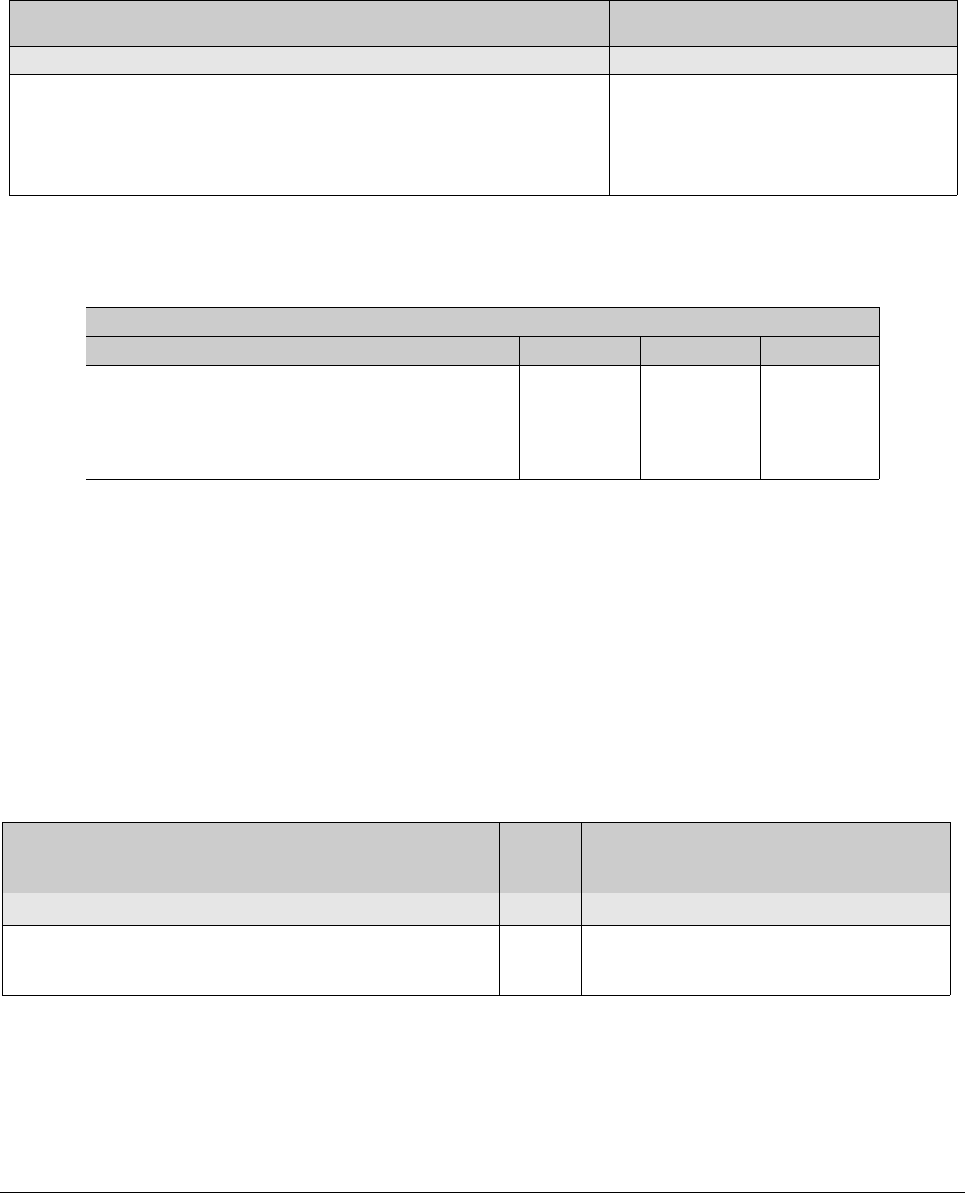User's Manual

RTM Elster AMCO applicative PFS Coronis Systems
5.5.4.Datalogging table reading
First of all, it is important to note that only the last logged reading is time stamped. So, CORONIS advises to
read datalogging table from the last logged reading in order to be able to compute the time stamp of each log.
Request data format
Applicative
command
Requested ports
logged readings
Expected Logged
Readings by Port
Offset in records table
1 byte 1 byte 2 bytes (MSB first) 2 bytes
0x07
(*)
0 : request to read datalogging table
from the most recent logged reading
n : request to read datalogging table from
the most recent logged reading + n.
(*)Requested index : indicates which logging table is expected,
Requested ports logged readings
b7 b6 b5 b4 b3 b2 b1 b0
Not used Not used Not used Not used
Port D
readings
0: skip
1: requested
Port C
readings
0: skip
1: requested
Port B
readings
0: skip
1: requested
Port A
readings
0: skip
1: requested
Response data format
If the amount of logs requested is too large to be returned with a single radio frame, RTM Elster AMCO
automatically uses “CORONIS multiframe” process, which is useful to decrease consumption and response
time. This process successively transmits several frames containing the recordings from the most recent to
the oldest one.
➢ First frame applicative data format
Applicative
acknowledgment
command
Generic
header
Datalogging
Parameters
RTC on last
logged reading
Frame
counter
Data zone
1 byte 23 bytes 7 bytes 7 bytes 1 byte Variable
0x87
(See section
§5.2.1 for field
description)
n
(*)
(1) Frame counter starts with the number of frame that will be transmitted : n
EVO RTM-UserMan 41










